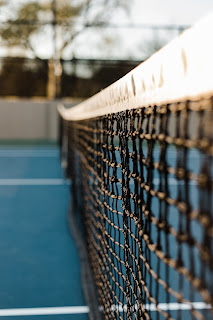If you find this interesting and want to take a deeper dive into it click the link below
Detailed Notes on Eco D and Motor Learning Design in Sport
🚀 Article in 3 Sentences
- The article starts with
talking about how skill acquisition is viewed from an Ecological Dynamics
perspective. In Eco D good performance is adapting your movements to suit
the everchanging environments.
- Talks about some of the
principles of good practice design and how learning takes place from an
Ecological Dynamics perspective.
- Finishes with talking about
how we can design learning environments and what we need to make sure we
are doing
🤝Impressions
Even
though I have quite a good understanding of Ecological Dynamics, there was
still so much to take from this chapter. It’s something everyone should go back
over every so often to affirm their understanding of some of the key concepts
🎾How Article will influence my coaching
- Think more about how the
environment and the athlete are interacting. Use things like video
analysis to help you understand
- How are the players
exploiting the physical and informational constraints during practice.
Sometimes I tend to put pay more attention to physical
- All constraints are
interacting and having an influence on each other. The timescales
constraints act on is important to look out for
- Make sure that the
variability had a purpose. Can you purposeful variability to guide
athletes into metastable regions
- Intentional constraints are
the most important constraint and the first one we should focus on
- Think more about what stage
of learning the player may be at. This then will guide how you are using
different principles of practice design
- Put a bit more thought into
how you are manipulating certain constraints. What am I specifically
trying to do
- Make sure you are taking
into account all the different elements of RLD
- Good practice design is
practice that is beneficial for specific athlete(s) in a specific context
at a specific time
- Do more task analysis to see
what the main constraints are
🥇Top Quotes
💡 Successful performers are able
to adapt their actions to dynamically shifting environments that characterize
competitive sport
💡 For each learner, the task in
sport is to exploit physical and informational constraints to stabilize an
intended behaviour
💡 A non-linear pedagogical
approach provides a principled, theoretical framework for understanding
individuality and applying the ideas in learning design
💡 For each learner, the task in
sport is to exploit physical (i.e. mechanical) and informational (i.e. patterns
in the distribution of stimulus energy) constraints to stabilize an intended
behaviour
💡 The ‘search and assemble’
process that characterizes learning in each individual can be enhanced by
system variability, which amplifies exploratory activity and guides discovery
of individualized functional solutions (Newell, Liu & Mayer-Kress, 2008; Schöllhorn,
Mayer-Kress, Newell & Michelbrink, 2009)
💡 Intentional constraints shape
perception–action couplings. In certain situations, particular perceptions and
actions are more functional than others and, with experience, learners get
better at choosing the perceptions and actions they can use to achieve task
goals
💡 System degeneracy, or the
ability of elements that are structurally different to perform a similar
function or yield a similar output, is an essential feature of skilled
behaviour. It enhances the flexibility of athletes in competitive performance environments
(Davids, Button, Araújo, Renshaw & Hristovski, 2006)
💡 In summary, intentions,
perceptions and actions are intertwined processes that benefit from the
education of intention, attunement to key perceptual variables in the
performance environment and calibration as the system changes as a result of
processes such as development and maturation
💡 Representative learning design is a new term which theoretically captures how motor learning theorists and pedagogues might use insights from ecological dynamics, such as perception–action coupling, emergence under constraints, self-organization, task simplification, movement pattern variability and neurobiological system degeneracy, to ensure that practice and training task constraints are representative of the context towards which they are intended to generalize (Pinder et al., 2011).
💡 There is no general ‘optimal organization’ for designing practices. The organization of training practices that are useful (i.e. to develop sport expertise) is that which is relevant to improve performance of a specific individual athlete, or groups of athletes, in a certain context learning a certain task (Davids, Button & Bennett, 2008).
💡 The key to assisting learners in
acquiring functional movement behaviours comes about through presenting the
relevant constraints during the different phases of skill development


Comments
Post a Comment